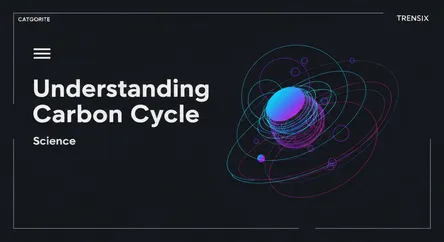Science
Understanding the Carbon Cycle

Discover the carbon cycle, Earth's essential process for recycling carbon through the atmosphere, oceans, and living organisms. Learn why it matters.
What is it?
The carbon cycle is the process by which carbon atoms continuously travel between the atmosphere, oceans, land, and all living organisms. On Earth, carbon is stored in reservoirs like the atmosphere (as CO2), rocks, and biomass. This natural system is driven by key processes. Plants absorb carbon dioxide through photosynthesis to create food, while animals and plants release it back through respiration. When organisms die, their carbon returns to the soil and oceans, and over millions of years, can form fossil fuels, ensuring the building block of life is constantly recycled.
Why is it trending?
The carbon cycle is a major global topic because human activities are disrupting its natural balance, accelerating climate change. The burning of fossil fuels (coal, oil, and gas) for energy releases vast quantities of stored carbon into the atmosphere as carbon dioxide. Deforestation further contributes by reducing the number of trees available to absorb CO2. This rapid influx of greenhouse gases is happening much faster than natural systems can remove it, causing a net increase in atmospheric carbon and making it a central issue in environmental science.
How does it affect people?
A disrupted carbon cycle directly impacts human well-being by altering the climate. Increased atmospheric CO2 enhances the greenhouse effect, causing global temperatures to rise. This leads to more frequent and intense weather events like heatwaves and floods, rising sea levels that threaten coastal communities, and disruptions to agriculture. It also causes ocean acidification, which harms marine ecosystems and the fishing industries that depend on them. The stability of our planet's climate and food supply is directly linked to a balanced carbon cycle.